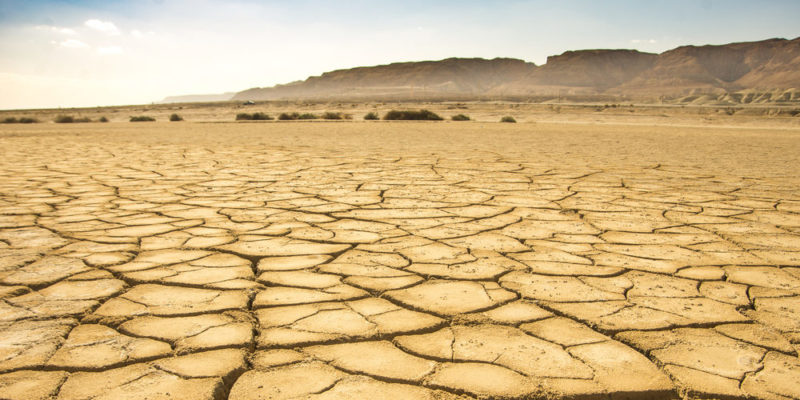We explain what the arid climate is, its characteristics and classification. In addition, how is its flora, fauna and its human populations.
What is arid climate?
The arid climate is a type of climate that is characterized by low rainfall , less than 300 millimeters a year, and that usually extends in areas with little vegetation and with a dry climate, in regions close to the tropics. The temperature between day and night is usually very contrasting.
It is the typical climate of arid or semi-arid regions that represent 47% of the earth's surface and of desert regions that represent 25% of the Earth's surface. It extends into territories such as western North America , Australia, southern South America , the Sahara desert in central and southern Africa, and much of Asia .
Characteristics of the arid climate
The arid climate is characterized by:
- The scarce precipitations that are inferior to the evaporation of the water present in the terrestrial surface.
- The wide thermal variation between day and night.
- The shortage of humidity .
- Be typical of desert or semi-arid areas , with little vegetation.
- The maximum temperatures that can reach 40º C.
- The minimum temperatures in winter sometimes can reach the freezing point.
Types of arid climate

The types of arid climate are:
- Hot arid steppe climate. It is characterized by mildly cold winters and quite warm summers, with little rainfall and steppe vegetation adapted to these conditions. It is a typical climate in regions such as: Morocco, the Iberian Peninsula, the southern coast of California and areas of central Australia.
- Cold steppe arid climate. It is characterized by very cold winters and mild summers. The precipitations are little and the vegetation is of steppe. It is a typical climate of regions far from the sea , such as: central Iran, the Ebro valley and in the steppes of central Asia.
- Hot arid desert climate. It is characterized by mild winters, although at night they can be extremely cold, and by very hot summers with temperatures that have reached the highest heat levels on the planet. The precipitations are very little and the vegetation is very little, only plants typical of the deserts capable of storing water. It is a typical climate of regions such as: the desert in the southwestern United States, the Arabian peninsula, the coast of Peru and northern Chile , the Sahara desert and the deserts of Australia.
- Cold arid desert climate. It is characterized by very cold winters and mild summers. The precipitations are very little and the vegetation is very little or no. It is a typical climate of southern regions or high mountain regions such as: the extreme south of Argentine Patagonia, the deserts of the western United States and the deserts of central Asia.
Arid climate flora

The flora of regions with arid climates is usually scarce and widely dispersed due to low rainfall, such as shrubs, thorny plants and bushes.
In addition, there are species that have adapted to extreme weather conditions , such as the saguaro, which is a type of cactus capable of storing water in its stems and roots. Near oases and humid areas, where rainfall and accumulation of water occur, there are species such as the date palm.
Arid climate fauna

Wildlife arid climate regions is generally poor and unvaried , such as snakes, lizards, beetles, scorpions, spiders, ants , vultures, birds of prey and some mammals such as camels, dromedaries, foxes , jackals and mice. Due to harsh temperature conditions, water shortages and the difficulty of finding food, animals often migrate or hibernate during the winter.
Human population in arid climate
The human population is not abundant in the arid climate regions. However, there are some permanently established peoples , such as the Kalahari Bushmen in Namibia in Africa and the Tuaregs in the Sahara in North Africa.
The above content published at Collaborative Research Group is for informational and educational purposes only and has been developed by referring reliable sources and recommendations from technology experts. We do not have any contact with official entities nor do we intend to replace the information that they emit.
Veronica is a culture reporter at Collaborative Research Group, where she writes about food, fitness, weird stuff on the internet, and, well, just about anything else. She has also covered technology news and has a penchant for smartphone stories. .
Leave a reply
Your email address will not be published. Required fields are marked *Recent post

Sport: What Is It, Types, Risks, Features, Characteristics and Examples

Dogs: Emergence, Features, Characteristics, Feeding and Breeds

Story: Definition, Elements, Structure, Features and Characteristics

